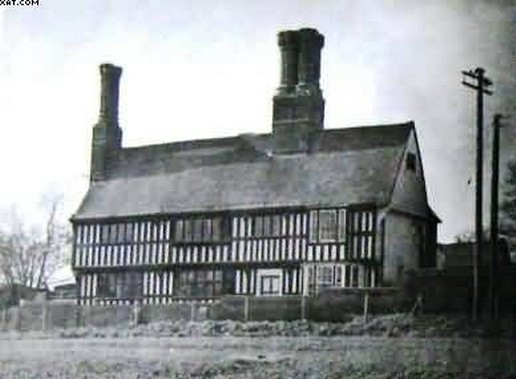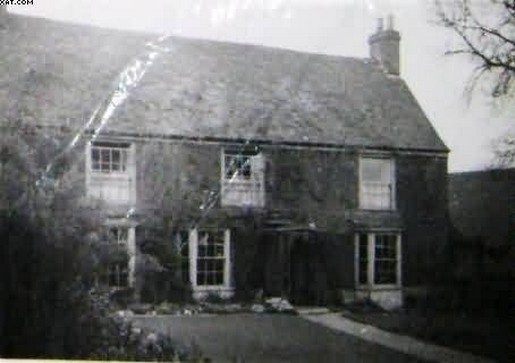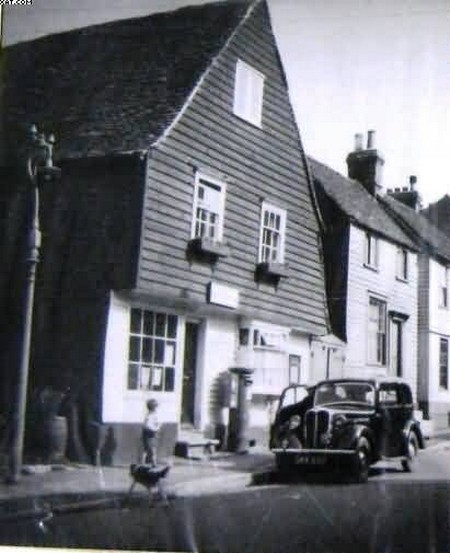Other Places of Interest
The Rectory, a very interesting house, part of which dates from the fourteenth century, originally consisted of a great hall, with kitchens at one end and living rooms at the other. This hall, which was afterwards divided up by the insertion of a ceiling and partition walls, still exists as part of the present house. Many carved and moulded stones, believed to have come from a chapel joined to the house and built in the year 1348, were dug up and have been built into the wall of the garden. Various records indicate that the house has been burnt down at least once and that it probably suffered violence and perhaps pillage in 1378 from Wat Tyler’s rebels. It is popularly believed that the Magna Carta was drawn up here. It is also reputed to possess a ghost – a friendly one with rustling draperies. A custome that all callers at the Rectory on St. James’ Day (25th July) were entitled to be given a mutton pie and a loaf of bread was discontinued about a hundred and fifty years ago. The ‘mutton’ pies, we are told, were made from lambs’ tails contributed by local farmers.

Of notable properties in the parish perhaps the best known is Manor House, now in the occupation of Mr. W. Filmer. An interesting feature are two beautiful old brick chimneys, which happily, escaped destruction when the house was severely damaged by fire at the beginning of the present century. This same fire damaged the old bay windows and of the fine exterior timbers, but skilful workmanship restored to the house much of its former beauty.
Courtsole, adjoining the churchyard on the north side, is another of the older houses which are still occupied. It was for a long time the property of one or another of the family of Roper’s, until it was conveyed by sale to a Mr. Joseph Hasted, of Chatham, whose grandson, Edward Hasted, afterwards inherited it. Although not the well-known Kentish historian having the same surname, Edward was definitely a relative.
 Both ‘Cardens’ and ‘Mortimers’ are estates which appear to have derived their names from their early owners. The former, we are told, was held in the reign of Edward I, by the heirs of Robert Cardon, Robert le Ram and Alicia Salamon. According to Halsted, ‘In the 20th year of Edward III John Cardon and others held it in the manor of Horton Kirby, as the fourth part of one knight’s fee for which they paid respective aid at making the Black Prince a knight.’Joane, the wife of one of Robert le Ram’s descendants, is buried in Cliffe Church. ‘Mortimers’ sometimes called ‘Bluegates’, was anciently in the possession of a younger branch of the great family of Mortimer, John Mortimer residing there in the reign of Edward III, it being recorded that at that time he was ‘summoned’ to provide a hobbeler, or light horseman, for the security of the coast around about Genlade (Yantlett) in Hoo.
Both ‘Cardens’ and ‘Mortimers’ are estates which appear to have derived their names from their early owners. The former, we are told, was held in the reign of Edward I, by the heirs of Robert Cardon, Robert le Ram and Alicia Salamon. According to Halsted, ‘In the 20th year of Edward III John Cardon and others held it in the manor of Horton Kirby, as the fourth part of one knight’s fee for which they paid respective aid at making the Black Prince a knight.’Joane, the wife of one of Robert le Ram’s descendants, is buried in Cliffe Church. ‘Mortimers’ sometimes called ‘Bluegates’, was anciently in the possession of a younger branch of the great family of Mortimer, John Mortimer residing there in the reign of Edward III, it being recorded that at that time he was ‘summoned’ to provide a hobbeler, or light horseman, for the security of the coast around about Genlade (Yantlett) in Hoo.Bury Court is another of the old estates mention in the various records, being sometimes called Berry Court, Bury Court or Perry Court. The actual farmhouse of Berry Court now no longer exists. ‘Quickrells’ is another old property, and is mentioned in the old 1735 Rate Book.

One of the quaintest buildings in Cliffe is the Post Office. Built over 300 years ago, it was here that Cliffe Co-operative Society commenced business, remaining there until more commercial premises were built for them in Church Street. The Post Office now belongs to the Rector and Churchwardens to whom it was given, in 1920, ‘to be used as a men’s club.’
Almost opposite the Post Office is a passageway leading from the High Street to the Churchyard, and this is reputed to be the scene of the stocks of years ago.
